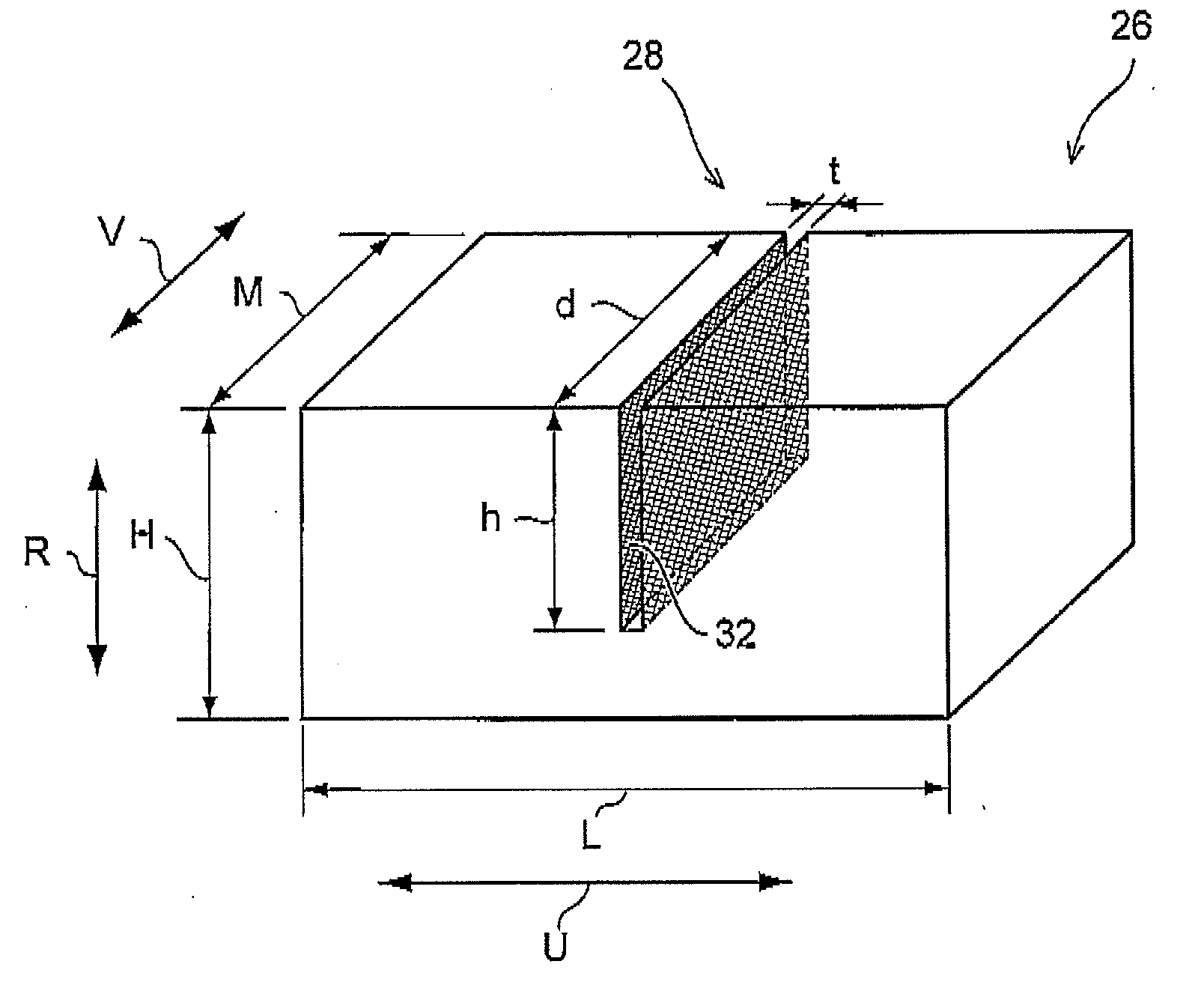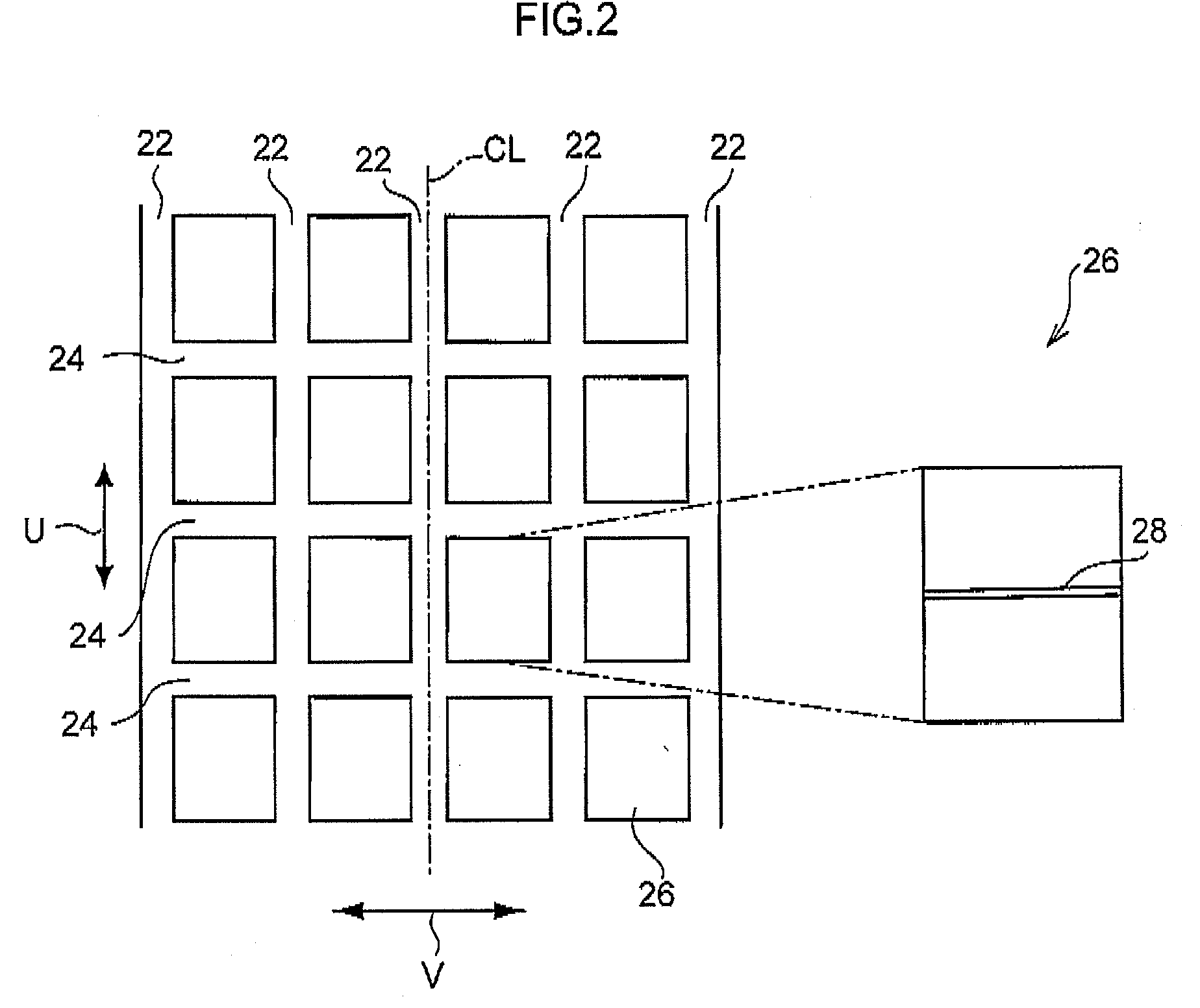Pneumatic tire
a technology of pneumatic tires and spherical tubes, which is applied in the direction of vehicle components, transportation and packaging, non-skid devices, etc., can solve the problems of difficult to obtain a sufficient water sucking effect by sipes, and difficulty in ensuring a sufficient path for water to be let out, so as to achieve a raised braking performance on ice
- Summary
- Abstract
- Description
- Claims
- Application Information
AI Technical Summary
Benefits of technology
Problems solved by technology
Method used
Image
Examples
first exemplary embodiment
[0066]Explanation will first be given of a first exemplary embodiment. As shown in FIG. 1, a pneumatic tire 10 according to the present exemplary embodiment is equipped with a carcass 12 configured from a single layer, or from plural layers, wrapped around bead cores 11 at each edge thereof.
[0067]A belt layer 14 is buried within the tire at the tire radial direction outside of a crown portion 12C of the carcass 12, the belt layer 14 being configured with plural overlapping sheets (for example two sheets) of belt ply.
[0068]A tread 16 is formed at the radial direction of the tire outside of the belt layer 14, and grooves are disposed in the tread 16. The tread 16, as shown in FIG. 2, has plural circumferential direction grooves (main grooves) 22 formed so as to run along the tire circumferential direction U on the plane of the tire equator CL, and on both sides thereof. Plural transverse grooves 24 are also formed in the tread 16 intersecting with the tire circumferential direction U....
second exemplary embodiment
[0103]Explanation will now be given of a second exemplary embodiment. As shown in FIG. 15, a pneumatic tire 110 according to the present exemplary embodiment is equipped with a carcass 112 configured from a single layer, or from plural layers, wrapped around bead cores 111 at each edge thereof.
[0104]A belt layer 114 is buried within the tire at the tire radial direction outside of a crown portion 1120 of the carcass 112, the belt layer 114 being configured with plural overlapping sheets (for example two sheets) of belt ply.
[0105]A tread 116 is formed at the tire radial direction outside of the belt layer 114, and grooves are disposed in the tread 116. The tread 116, as shown in FIG. 16, has plural circumferential direction grooves (main grooves) 122 formed so as to run along the tire circumferential direction U on the plane of the tire equator CL, and on both sides thereof. Plural transverse grooves 124 are also formed in the tread 116 intersecting with the tire circumferential dire...
third exemplary embodiment
[0124]Explanation will now be given of a third exemplary embodiment. FIG. 22 is a diagram showing a tread of a pneumatic tire 151 in the present exemplary embodiment.
[0125]Circumferential direction grooves 152, transverse grooves 153, and blocks 154 are formed to the tread of the pneumatic tire 151.
[0126]The circumferential direction grooves 152 are grooves that extend along the tire circumferential direction (the direction of arrow U). The transverse grooves (width direction grooves) 153 are grooves that extend along the tire width direction (the direction of arrow V). The blocks 154 are blocks partitioned by the intersection of the circumferential direction grooves 152 and the transverse grooves 153, and are blocks having sipes 155. The blocks 154 are configured with central region blocks 154a and edge region blocks 154b.
[0127]The central region blocks 154a are blocks formed at a central region A of the tread. The edge region blocks 154b are blocks formed at edge regions B of the...
PUM
 Login to View More
Login to View More Abstract
Description
Claims
Application Information
 Login to View More
Login to View More - R&D
- Intellectual Property
- Life Sciences
- Materials
- Tech Scout
- Unparalleled Data Quality
- Higher Quality Content
- 60% Fewer Hallucinations
Browse by: Latest US Patents, China's latest patents, Technical Efficacy Thesaurus, Application Domain, Technology Topic, Popular Technical Reports.
© 2025 PatSnap. All rights reserved.Legal|Privacy policy|Modern Slavery Act Transparency Statement|Sitemap|About US| Contact US: help@patsnap.com



